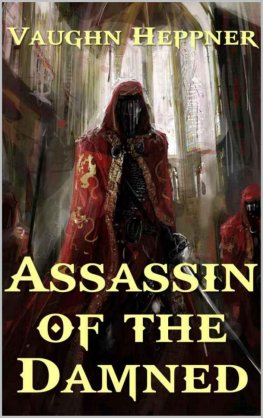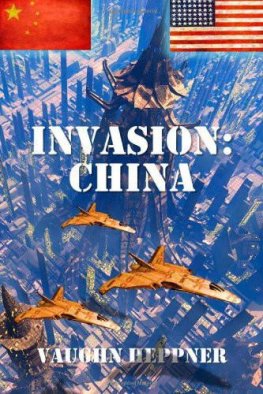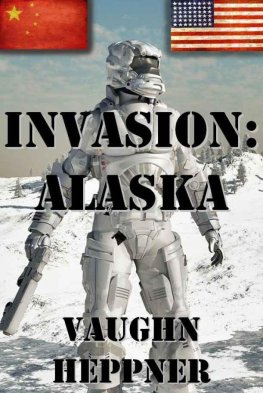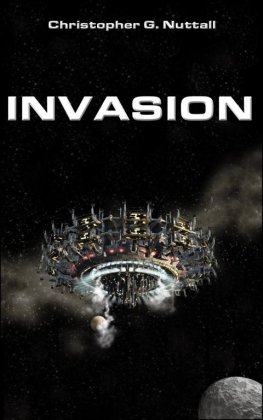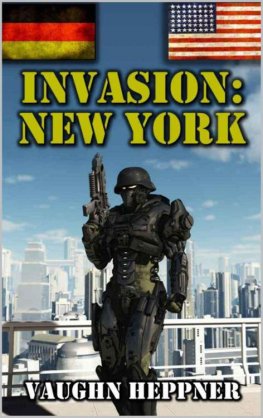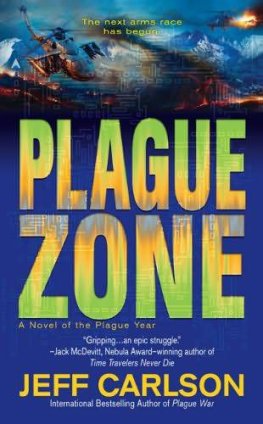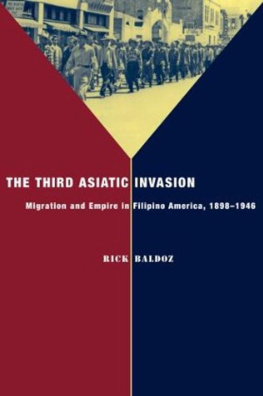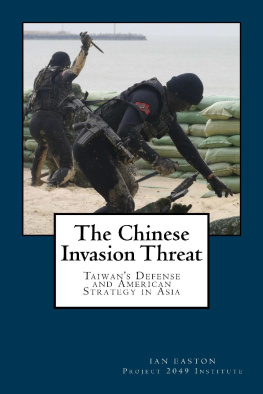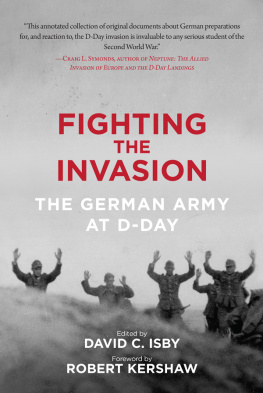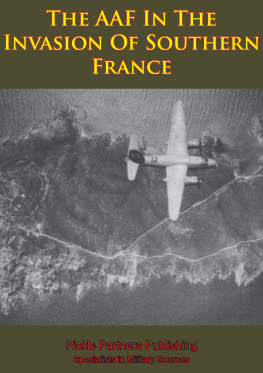INVASION: COLORADO
by Vaughn Heppner
It is foolish and wrong to mourn the men who died. Rather we should thank God that such men lived.
George S. Patton Jr.
From Tank Wars, by B.K. Laumer III:
The invasion of the United Sates by the Pan-Asian Alliance and the South American Federation in 2039 has few parallels in modern history. The closest example would be Hitlers invasion of Russia in 1941.
In that year, Germany marshaled approximately three million ground troops in 167 divisions. Two hundred thousand of those soldiers were from satellite nations. The Germans envisioned Operation Barbarossa as a four-month blitzkrieg campaigna panzer race to the Volga River, sealing off European Russia from its Asian hinterland.
In 2039, Operation Whirlwind dwarfed the German numbers, although it had a similar scope. Seven million Chinese, Japanese, Korean, Brazilian and Venezuelan soldiers in 368 divisions would roll across the New Mexico-Texas border. Instead of three Army Groups as the Germans used, Chairman Hong divided the force into three gigantic Fronts.
The concentrations were as follows: Marshal Liang commanded the Third Front. It consisted of two PAA Army Groups, together with General Zhens Tank Army. Marshal Wen commanded the Fourth Front with two PAA Army Groups and General Shins Tank Army. Marshal Sanchez commanded the SAF First Front, with two SAF Army Groups. Lastly, a South American Federation amphibious force waited in Venezuela to assault the American coastline.
All together, this represented the greatest concentration of military power ever used in a single campaign. The world had never seen such might and it is unlikely that such a mass of men and tanks will ever again drive united toward a goal.
From Military History: Past to Present, by Vance Holbrook:
Invasion of Midwestern America, Phase I, 2039-2040
Chinese Plans. Worsening, worldwide glaciation dominated Chairman Hongs strategic thinking. Mass starvation was becoming a stark reality for almost every nation, including China. The American heartland with its continued bounty was the worlds most critical asset. The lure of the wheat fields drew Hongs attention like a magnet and may have warped his judgment.
The grand plan was simple. The Pan-Asian Alliance together with the South American Federation marshaled the greatest invasion force in historyseven million ground troops in Northern Mexico, 368 divisions. They would smash across the Rio Grande as the German Dominion invaded New Orleans and Louisiana. Led by Marshal Liang, one gigantic thrust would use the Rocky Mountains as its western wall, driving north into the American Midwest. The second thrust under Marshal Wen would use the Mississippi River as its eastern wall, also driving north. In the center and linking the two Chinese Fronts was the SAF First Front under Marshal Sanchez. The Canadian border was the end goal of all three field marshals. Vast battles of annihilation would destroy the core of the American Armed Forces in the prairie corridor between the Rockies and the Mississippi.
This conquest would yield to Hong and Greater China the Great Plains wheat fields, and it would divide the United States into two unequal halves. In the following year, if the Americans didnt sue for peace, Hong envisioned the Western Conquest, from the Rockies to the Pacific Coast. In the third year and campaign, and with German Dominion help, China would complete the American subjection with the Eastern Conquest from the Mississippi River to the Atlantic Coast.
Originally set for 12 May 2039 and with the addition of 2 million more ground troops, the timetable for Operation Whirlwind was seriously disarranged by the preemptive attack into California (see Invasion: California). Beginning 21 April 2039, two million Chinese troops smashed against the SoCal Fortifications and drove north into the Golden State. Unprecedented Chinese losses, the paucity of conquered territory and the deaths of Marshals Kao, Nung and Foreign Minster Deng shook the Chinese military and its allied forces, particularly the German Dominion. The need for Chinese reorganization and resupply of stockpiled munitions added many weeks to the original start date of Operation Whirlwind. Instead of May 12, the Midwestern invasion began on 15 June 2039.
American Plans. American forces were heavily concentrated behind the Rio Grande in Texas and New Mexico, with coastline defenses along the southern Atlantic and Gulf States. The lessons in California taught the Americans the need for defense in depth. Mobilized American ground strength approximated five million on the Rio Grande, half a million in California with another million scattered elsewhere, primarily on the Eastern and Southern coastlines. Reserves were available and the formation and training of hastily assembled troops had begun. Although the country possessed the worlds largest concentration of rifles and shotgun, the problem was that more American materieltanks, cannons and planeswere desperately needed.
German Plans. American defensive stubbornness in California impressed the German Dominion military. On their recommendation, Chancellor Kleistthe new Otto von Bismarck of the twenty-first centuryreevaluated the situation he faced. He determined to hold back the GD military, letting the Chinese and Americans bled themselves white against each other. Afterward, he would seek easy objectives of opportunity. On that basis, the Chancellor weekly reassessed the war.
2039, June 15-July 6. The Invasion. Simultaneously along a 2,000-kilometer front, the onslaught started at 3:30 A.M. with the customary air and artillery bombardments. The Americans had expected an offensive and therefore the Chinese failed to achieve surprise, although several Swan missiles with tactical EMP helped the initial attacks succeed. In grinding attritional battles, the Chinese and South American forces reached the Pecos River in West Texas and neared San Antonio in the east. In the last days of June, armored thrusts broke through the American lines and swept around San Antonio. The pocket surrendered on July 6, and 160,000 Americans marched into captivity, with the Chinese capturing 500 tanks and 350 artillery pieces.
2039, July 6-August 3. The Big Push. Marshal Liangs Third Front, which began operations at El Paso, battled relentlessly forward to Albuquerque, New Mexico and onward to Santa Fe. This Front saw some of the bloodiest fighting in the war and decimated the American forces. The Siege of Albuquerque bagged the Chinese 200,000 prisoners, 200 tanks and 400 guns, while the Siege of Santa Fe cost the Americans 300,000 casualties.
The Fourth Front made even greater territorial progress, shoving the American lines back to Houston and in the north to Dallasas Marshal Wen sought to reach the Mississippi River. Both cities fell after Chinese armored thrusts bypassed the metropolises, although the troops fates were radically different. General McGraw fought his way free of Dallas, saving 130,000 soldiers, although leaving the majority of his heavy equipment behind. The trapped soldiers in Houston literally starved to death, refusing every offer to surrender.
In the last week of July, the South American Federation amphibiously invaded New Orleans, taking the place of the reluctant German Dominion military. It was a costly fiasco in terms of SAF blood and materiel, although the city fell to the invaders when the American forces finally retreated in good order.
2039, August 3-September 7. Hongs Changes. After the costly and some believe pyrrhic victories of El Paso, Albuquerque and Santa Fe, Marshal Liangs Third Front strictly followed Chinese operational plans, using the Rocky Mountains as its western wall and slowly battling northward.


